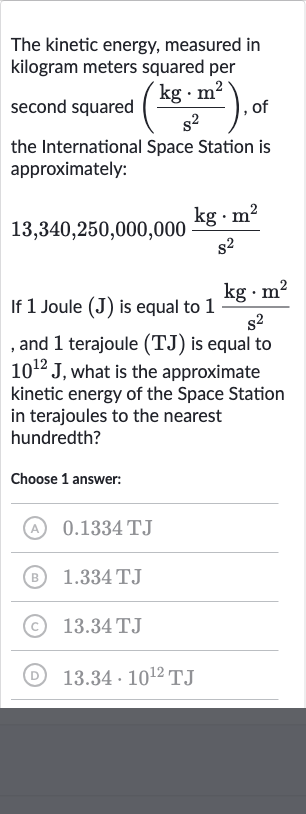AI tutor
Welcome to Bytelearn!
Let’s check out your problem:

The kinetic energy, measured in kilogram meters squared per second squared , of the International Space Station is approximately:If Joule is equal to , and terajoule is equal to , what is the approximate kinetic energy of the Space Station in terajoules to the nearest hundredth?Choose answer:(A) (B) (C) (D)
Full solution
Q. The kinetic energy, measured in kilogram meters squared per second squared , of the International Space Station is approximately:If Joule is equal to , and terajoule is equal to , what is the approximate kinetic energy of the Space Station in terajoules to the nearest hundredth?Choose answer:(A) (B) (C) (D)
- Understand conversion factors: Understand the conversion factors. Joule (J) is equal to . terajoule (TJ) is equal to .
- Convert to Joules: Convert the given kinetic energy in to Joules.The given kinetic energy is .Since is equal to J, the kinetic energy in Joules is also J.
- Convert to terajoules: Convert the kinetic energy from Joules to terajoules.To convert from Joules to terajoules, divide the energy in Joules by .
- Round the result: Round the result to the nearest hundredth.Rounding to the nearest hundredth gives us TJ.
More problems from Solve quadratic equations: word problems
QuestionGet tutor help
QuestionGet tutor help
QuestionGet tutor help
QuestionGet tutor help
QuestionGet tutor help
QuestionGet tutor help
QuestionGet tutor help
QuestionGet tutor help
